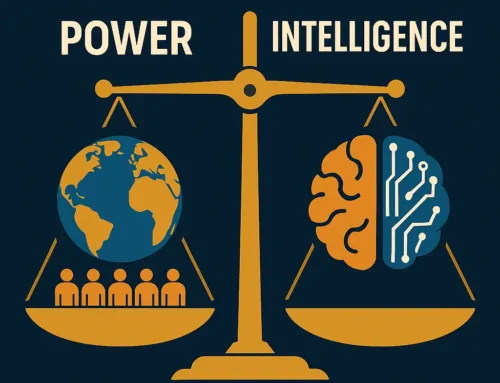
Approx. read time: 3.7 min.
Post: 4 Important shifts companies need to make in this fast pace IT industry
4 Key Shifts Companies Must Make in the Fast-Paced IT Industry
As the IT industry continues to evolve rapidly, companies must make four fundamental shifts to stay competitive. Here’s a detailed look at these crucial changes and the technology trends driving them.
1. Innovation at the Edge
Key Tech Trends
- Hybrid and Multi-Cloud Management: By 2024, 70% of companies will use these technologies.
- 5G Networks: Promising speeds up to 100 times faster than 4G LTE, with 40 times lower latency.
- AI-Driven User Interaction: Over 50% of user interactions will be augmented by AI by 2024.
- Data Creation: Global data is expected to reach 180 zettabytes by 2025.
- Low-Code Platforms: Expected to grow at a compound annual growth rate (CAGR) of 30% through 2030.
Shift: Empowering Innovation at the Organizational Edge
Organizations need to leverage the expertise of their frontline employees to drive innovation. Traditional centralized innovation models are no longer sufficient. Instead, companies should enable domain experts and technologists to act as the business’s venture capital arm. This decentralized approach allows for quicker identification and scaling of innovative solutions.
For example, a pharmaceutical company engages its expert researchers to tap into external networks, leveraging their deep field knowledge to innovate effectively. IT departments should support these efforts by providing tools, platforms, and reusable code libraries that facilitate the scaling of new applications across the business.
Further Reading: “Tech Companies Innovate at the Edge. Legacy Companies Can Too” in Harvard Business Review.
2. Perpetual-Learning Culture
Key Tech Trends
- Connected Devices: By 2025, 50 billion devices will connect to the Industrial Internet of Things (IIoT).
- Digital Twins: 70% of manufacturers will use digital twins regularly by 2022.
- Low-Code/No-Code Applications: Expected to make up 70% of new applications by 2025.
- Metaverse: Projected to generate $800 billion in revenue by 2024.
Shift: Continuous Learning and Tech Literacy
The rapid pace of technological advancement necessitates a culture of continuous learning. Employees at all levels need to keep their skills up to date, from citizen developers using low-code tools to full-stack engineers. Companies must transition from periodic training programs to ongoing learning initiatives integrated into daily workflows.
Netflix exemplifies this approach with its experimentation platform, which serves as a repository of solutions for future projects. This culture of perpetual learning encourages experimentation and reduces the fear of failure, fostering innovation.
Further Reading: “A Perpetual Learning Culture” by McKinsey.
3. IT as a Service
Key Tech Trends
- Cloud Microservices: Expected to generate $4.2 billion in revenue by 2028.
- APIs and Software 2.0: Nearly 90% of developers use APIs, facilitating a modular approach to software development.
Shift: Enabling Innovation through IT
IT departments must transition from being gatekeepers of technology to enablers of innovation. This involves providing modular blocks of reusable code and fostering a self-service approach for business units. For instance, G&J Pepsi-Cola Bottlers developed an app to manage store shelf inventory using minimal technical expertise, showcasing the power of empowering citizen developers.
By adopting a product-centric model, IT can support fast-paced innovation and enable business units to quickly assemble and deploy new solutions.
Further Reading: “IT as a Service” by McKinsey.
4. Expanded Trust Boundaries
Key Tech Trends
- Biometrics: Nearly 100% of biometric-capable devices will use this technology for transactions.
- Cybersecurity: Consumer trust is a significant concern, with many Americans highly concerned about personal data security.
Shift: Broadening Trust Across Stakeholders
As digital interactions and data collection increase, companies must expand their trust boundaries. This includes robust cybersecurity measures and transparent data practices. Consumers are increasingly aware of their privacy rights and demand ethical data use and responsible AI.
Companies need to assign dedicated leaders to manage trust and security across the entire organization. This role should encompass privacy, cybersecurity, and the ethical use of technology, ensuring that consumer trust is maintained.
Further Reading: “Trust in Technology” by The Pearson Institute.
As technological change accelerates, companies must adopt these four shifts to remain competitive. By innovating at the edge, fostering a perpetual-learning culture, enabling IT as a service, and expanding trust boundaries, organizations can harness the power of technology to drive continuous improvement and success.
Related Videos:
Related Posts:
Apple’s Strategic Shift Towards AI: Navigating New Frontiers and Challenges
Reflecting on Life: The Shift in Interests and Priorities in My 40s
Witty Employee’s Stand on Punctuality Sparks Internet Applause: A Lesson in Workplace Boundaries
Cloudflare expands government warrant canaries in transparency bid
Microsoft’s Security Culture Under Fire: Lessons from a Chinese Hack









